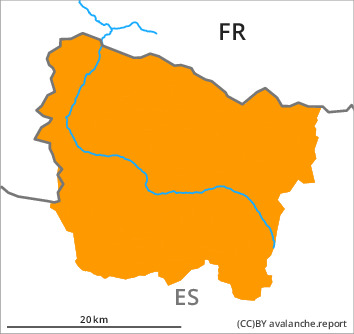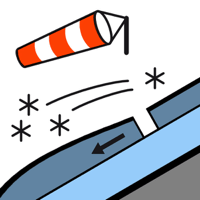
Danger level

Avalanche Problem

Persistent weak layer



Wind slab



Wind slabs and weakly bonded old snow are to be assessed with care and prudence.
The new snow of last week is lying on the unfavourable surface of an old snowpack on steep, little used shady slopes above approximately 1900 m. In many cases the avalanches in these loacations are large and can be released by a single winter sport participant. Transitions from a shallow to a deep snowpack where weaknesses exist in the old snowpack are especially dangerous. Remotely triggered avalanches are possible in isolated cases.
In addition the deep wind slabs of the last few days on south and east facing slopes are capable of being triggered still. Mostly the avalanches in these loacations are medium-sized and can be released in some cases by a single winter sport participant. As a consequence of a moderate to strong northerly wind, further wind slabs will form during the course of the night. These are only small but can be released easily.
The avalanche prone locations are numerous and are barely recognisable because of the poor visibility. The current avalanche situation calls for defensive route selection.
In addition the deep wind slabs of the last few days on south and east facing slopes are capable of being triggered still. Mostly the avalanches in these loacations are medium-sized and can be released in some cases by a single winter sport participant. As a consequence of a moderate to strong northerly wind, further wind slabs will form during the course of the night. These are only small but can be released easily.
The avalanche prone locations are numerous and are barely recognisable because of the poor visibility. The current avalanche situation calls for defensive route selection.
Snowpack
>
The snowpack remains unstable on wind-loaded slopes. Faceted weak layers exist deep in the snowpack in particular on wind-protected shady slopes. Whumpfing sounds and snow profiles indicate a very precarious avalanche situation.
Up to 90 cm of snow fell in the last seven days above approximately 1800 m.
Above the tree line there are 50 to 100 cm of snow, and even more in some localities. At intermediate and high altitudes snow depths vary greatly, depending on the infuence of the wind.
Up to 90 cm of snow fell in the last seven days above approximately 1800 m.
Above the tree line there are 50 to 100 cm of snow, and even more in some localities. At intermediate and high altitudes snow depths vary greatly, depending on the infuence of the wind.
Tendency
Tuesday: The danger of dry slab avalanches will not decrease for the time being.